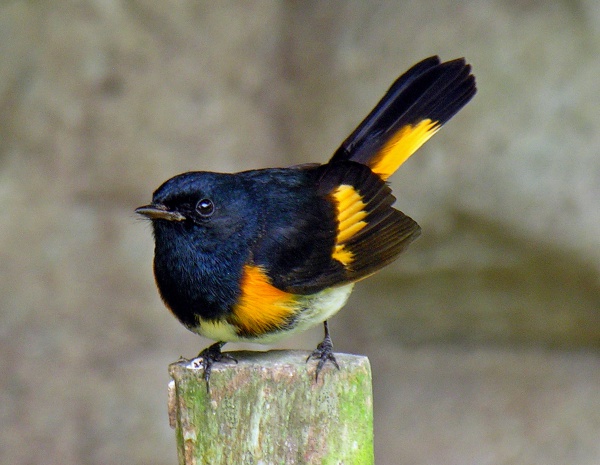Facts About American redstart
The American redstart, a vibrant warbler native to the New World, was first described by Carl Linnaeus in 1758. Its scientific name, Setophaga ruticilla, combines Ancient Greek and Latin roots meaning "moth-eating" and "redstart" respectively. During the breeding season, male American redstarts are easily identifiable by their striking black and orange-red plumage. In contrast, females and juveniles sport a blend of green, black, and grey feathers with yellow patches. These birds are notable for their melodic "see" song and gentle "chip" call.
American redstarts prefer breeding in open woodlands or scrub areas near water. They typically lay between two to five eggs in a cup-shaped nest. Their diet primarily consists of insects, which they catch either by flycatching or gleaning from leaves. As migratory birds, American redstarts spend their winters in Central and South America, as well as the West Indies.
Conservation efforts for the American redstart focus on protecting their habitats across their range. Shade-grown coffee plantations have proven beneficial, providing additional habitats for these birds. However, preserving natural habitats in both their wintering and breeding grounds remains crucial for their survival.
Predation is a significant threat to American redstarts. They face dangers from terrestrial predators such as squirrels, chipmunks, and snakes, as well as aerial predators like hawks and owls. While the oldest known banded American redstart lived over ten years, many do not survive the early stages of life due to these predators.
